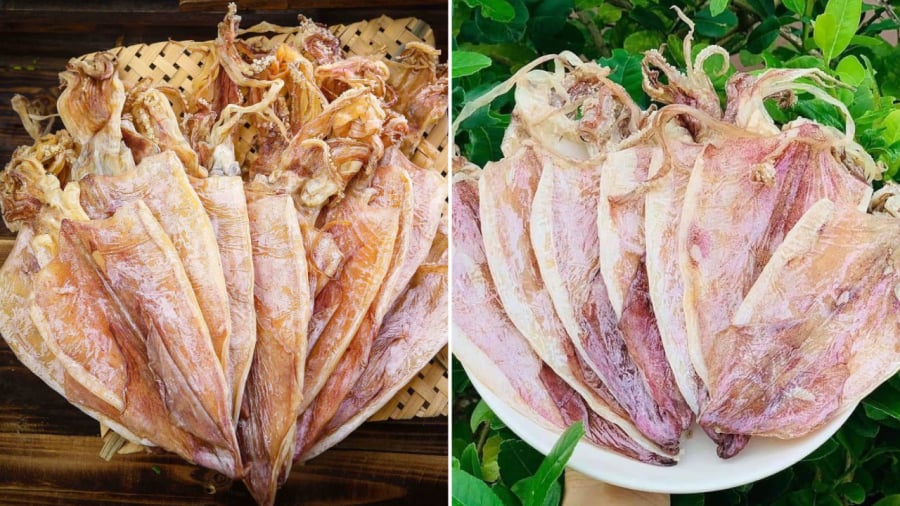How to Choose the Best-Dried Squid
- Color Inspection
The finest dried squid, made from fresh squid of guaranteed quality, typically boasts a light reddish-brown or natural pink hue. A thin layer of white powder on the squid’s back indicates proper drying.
Be cautious of overly dark or abnormally blackened squid, as these may be aged or chemically treated.
- Distinctive Aroma
Quality dried squid emits the natural fragrance of sun-dried seafood. Conversely, an odd, pungent, or ammoniacal odor suggests chemical treatment.

- Testing for Dryness and Tenderness
Ideal dried squid should be moderately dry, with flesh that is neither too tough nor too stiff. The squid should feel dry and non-sticky to the touch. Overly dry squid, often a result of excessive sun exposure or high-temperature drying, tends to be less flavorful.
- Examining the Eyes and Body
Clear, non-cloudy eyes indicate that the squid was dried while fresh and of good quality. Additionally, the body should be straight, without any bends or breaks, signifying proper storage.
- Size and Thickness
Dried squid size varies depending on the original squid used. However, regardless of type, opt for squid with uniform size, thick and firm flesh.
Thicker-bellied squid, known as “muc cau” in Vietnamese, generally offers better quality than “muc cao.” Avoid squid with thin flesh, as it may be pressed or of inferior quality.
Using these guidelines, you can select delicious dried squid that meets your preferences.
How to Store Dried Squid
Proper storage of dried squid is essential to maintain its flavor and prevent spoilage.
If you’re not consuming the dried squid immediately, wrap it in dry newspaper or place it in an airtight bag, then store it in the refrigerator’s cool compartment. For extended storage, transfer the squid to the freezer. Always ensure the squid is tightly wrapped to prevent its odor from affecting other foods and to protect it from moisture.
Alternatively, if refrigeration is not an option, seal the squid in a dry, airtight container or plastic bag, adding a desiccant packet if possible, and store it in a cool, dry place, safe from insects and rodents. Periodically check the squid’s quality and occasionally sun-dry it to maintain dryness.






























